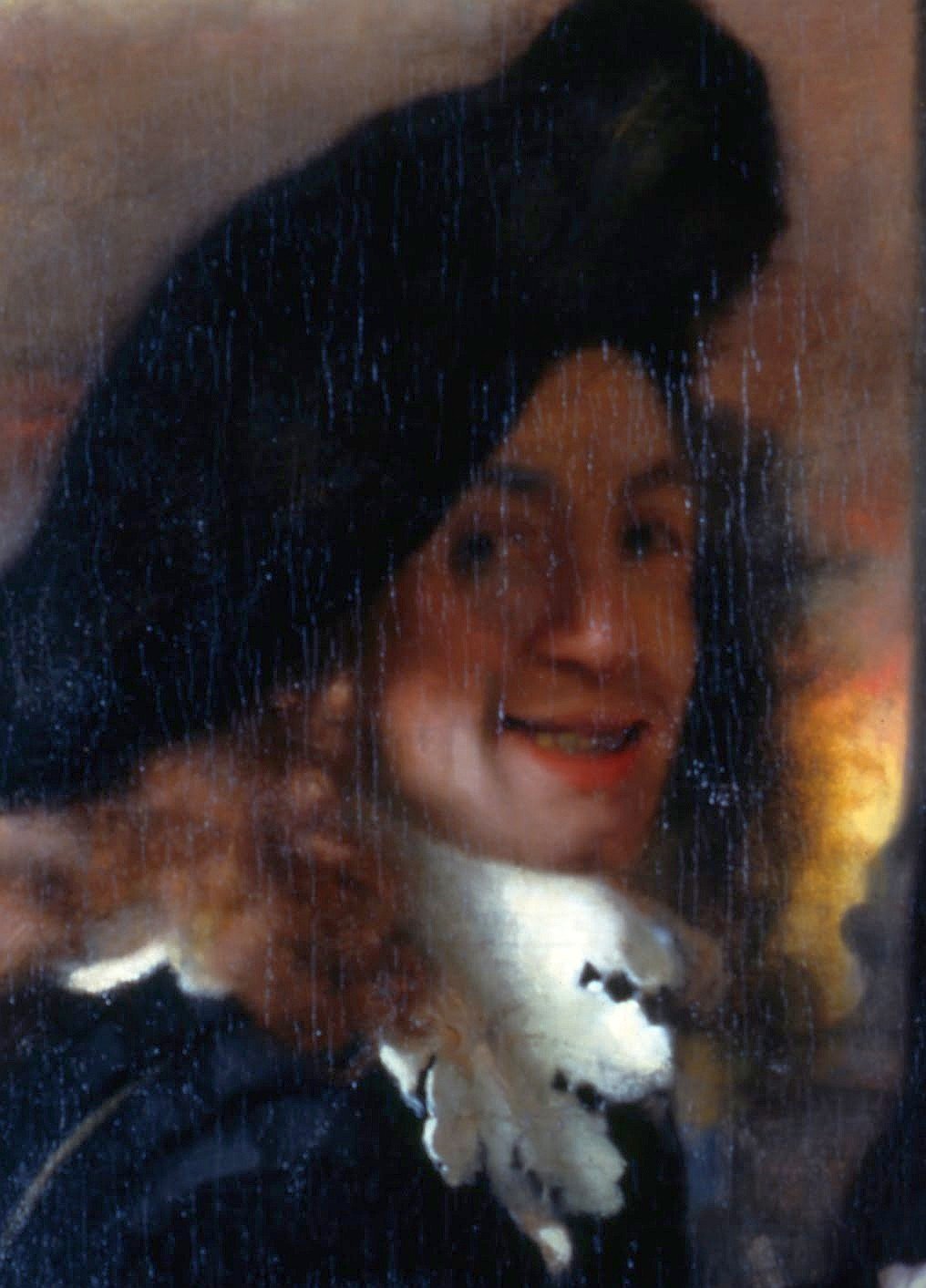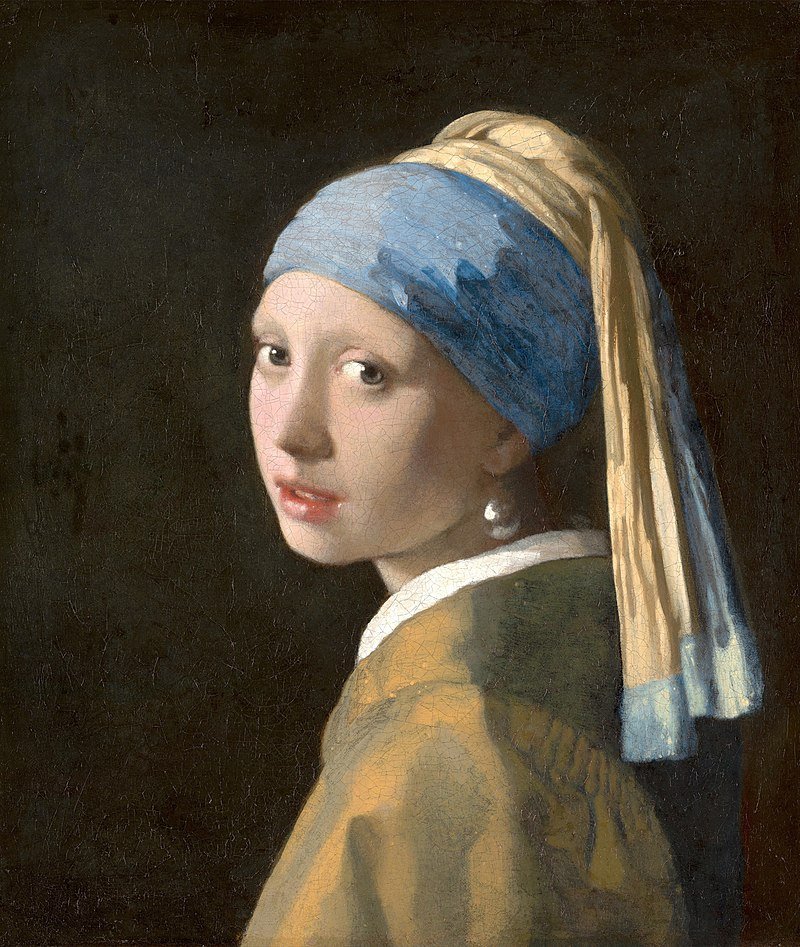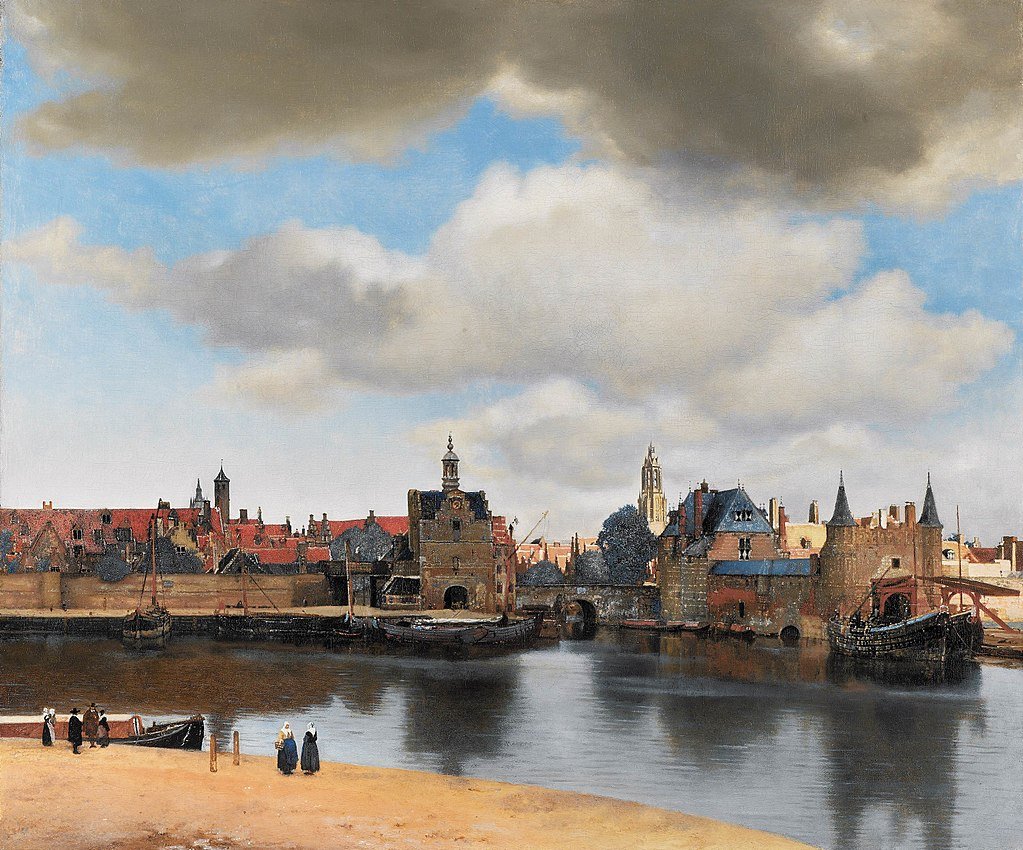VTS Recap: The Love Letter by Johannes Vermeer
Last week we did 2 VTS (Visual Thinking Strategies) sessions about this masterpiece from “The Master of Light,” Vermeer.
Who is Johannes Vermeer?
Born October 1632, Delft, Netherlands
Also known as Jan Vermeer
Dutch Baroque Period / Dutch Golden Age painter who specialized in depicting middle-class domestic life
Died December 1675, Delft, Netherlands
During his lifetime, he wasn’t rich or famous and left substantial debt to his wife and children when died.
In the 1800s, artists and art historians rediscovered his work, and the world fell in love with the way he masterfully used pigments to show light and the way he used the camera obscure to create realistic perspectives and depth of field that was uncommon during this time.
While no direct quotes exist from Vermeer himself, much has been written about him and other Dutch masters, including by French poet and novelist Marcel Proust (a Vermeer super fan).
“By art alone we are able to get outside ourselves, to know what another sees of this universe which for him is not ours, the landscapes of which would remain as unknown to us as those of the moon. Thanks to art, instead of seeing one world, our own, we see it multiplied and as many original artists as there are, so many worlds are at our disposal, differing more widely from each other than those which roll round the infinite and which, whether their name be Rembrandt or Vermeer, send us their unique rays many centuries after the hearth from which they emanate is extinguished.” —Marcel Proust
I love this quote from Proust because it eloquently expresses the reason that VTS is so powerful and why we started Neuro Atelier—to allow people to see the world through others’ eyes and to connect more deeply with diverse people in order to strengthen thinking, problem-solving, communication, and allyship.
History and significance of Vermeer’s paintings
Girl with a Pearl Earring, 1665
This is perhaps Vermeer’s most famous painting, especially among the public. There has been much speculation about whether this was a painting of a real girl or an idealized portrayal of feminine beauty.
It has inspired countless poems, stories, and screenplays—mostly having to do with the juxtaposition between imagined, idealized beauty and living experience
The Lacemaker, 1669
This painting is typical of the domestic scenes shown in many of Vermeer's paintings. He gave great care to showing the details of the work this woman is doing as she makes lace.
Historians agree that Vermeer most likely used a camera obscura to achieve realism and depth of field (where some areas of the canvas are rendered out-of-focus), which is unusual in Dutch Baroque paintings of this era. More about the camera obscura later.
View of Delft, 1660
Marcel Proust, a famous French novelist, critic, and essayist in the early 1900s, was a big fan of this painting and featured in prominently in the death scene of the writer Bergotte in his most famous work, In Search of Lost Time.
In a letter, Proust said of this painting, “Ever since I saw the View of Delft in the museum in The Hague, I have known that I had seen the most beautiful painting in the world.”
Many would agree and consider this the most memorable cityscape in European art, and, for many, Vermeer’s best painting.
As in The Lacemaker, it is assumed that Vermeer used a camera obscure to achieve the perspective and desired depth of field of this cityscape.
Symbolism within The Love Letter
While all seems innocent enough on the surface, this painting is full of symbolism that would have been readily recognized at the time it was painted. Not only is this called The Love Letter, but multiple devices are used to communicate that this is a letter from a lover of the carnal variety, including:
Curtain in the foreground (partially tied-up) = the painter (and we as the viewer) are looking at a private, personal scene
The woman in yellow holding a form of lute, a cittern = symbol of love or sex
Removed slippers = symbol for sex
Bottom painting on wall (stormy sea) = metaphor for tempestuous love
Top painting on wall (landscape with a lone male traveler) = absence of the man writing to this lady
The camera obscura—predecessor of modern cameras, favorite of artists like Vermeer
The camera obscura is a predecessor to the modern camera. It refers either to a darkened room or a small box with a small hole or lens at one side through which an image is projected onto a flat surface opposite the hole. If you’ve ever made a pinhole camera to expose film, it is essentially the same concept.
While the principles behind the camera obscura were noticed in ancient times (including by Aristotle), the first documented explanation of the exact mechanism came sometime between 1086–1088, from the Chinese polymathic scientist and statesman of the Song dynasty Shen Kua.
In the second half of the 16th century, the camera obscura, which had gained popularity among scientists, became a popular aid for drawing and painting.
In 1622, the Dutch poet Constantijn Huygens said,
“It is impossible to express the beauty [of the camera obscura image] in words. The art of painting is dead, for this is life itself: or something higher, if we could find a word for it.”
Quite a statement! What the camera obscura allowed artists to do was pretty remarkable—rather than relying on more archaic devices for showing perspective and depth of field, artists could now see and replicate the depth of field (some items being blurred while others are in focus) that we take for granted in photography and realistic paintings today.
What were some things that were noticed during the VTS discussions?
“The rich woman who owns the house is playing music, and the maid just handed her something that came in the mail that she wasn’t supposed to see, so the homeowner is surprised and upset while the maid is judging her”
Evidence: The woman sitting with the instrument is dressed in luxurious, expensive fabrics and her clothing also looks like it’s more designed than the other woman’s; the fabric looks luxurious because of the bright shine that looks like it’s maybe satin or silk, she’s wearing a lot of jewelry while the other woman is not, and it looks like the white part of her outfit has some delicate embroidery that would also be expensive; the woman’s facial expression (who is sitting down) looks unhappy with no smile and wide eyes that seem intense
“There is something wrong here, it feels creepy”
Evidence: In the bottom part of the curtain in the foreground, there is what looks like a smiley face with its tongue sticking out and only one eye; the drips down the wall on the left side seem creepy as well; and if you look at the bottom of the broom bristles, there is something dark there, maybe blood
“This isn’t a homeowner and a maid, but two friends or maybe two women who are relatives who both work in the house and have snuck into this room to dress up and act like the homeowner”
Evidence: They seem very intimate in how close they are to each other and because the woman who looks like the maid seems to have a comfortable, relaxed posture, which I would’’t expect between a rich homeowner and her servant
“The woman sitting down isn’t wearing shoes, either because she’s comfortable or to be respectful to the maid who is trying to clean the floor”
Evidence: I can’t see shoes under her skirt, so she could be wearing them, but it seems like those shoes belong to her and she took them off; it looks like there is a mess on the floor and some cleaning going on (the broom), so that may be why she took her shoes off by the door
“This isn’t a home, but is backstage as a musical venue, and the letter is an invitation to play for a prestigious event or something that will pay good money”
Evidence: There are some sheets of music in what looks like a closet, which I would expect in a backstage area; also this looks similar to other paintings from the time period I think this is from that show backstage areas; maybe the laundry is being done for the performers; the woman who just handed the letter (the one some see as the servant) looks like she’s smiling and maybe is delivering good news and the woman who is holding the note seems surprised, but maybe it’s a good surprise that has to do with her musical career
What do you see in this painting?






